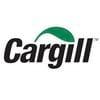Check out what is new in Poultry Industry
Find the best technical articles, forums, and videos on Poultry Industry at Engormix. Enter now and interact with the world's largest agricultural social network.

Mukesh Kumar Meshram, Principal Secretary of Animal Husbandry in Uttar Pradesh, explains the region’s poultry supply gap and the need for new farms and hatcheries. He highlights low egg availability, lack of technical training, and the urgency to improve cattle genetics. The state seeks private sector involvement to modernize infrastructure, boost productivity, and strengthen disease control. ...
Comments : 0
Recommendations: 2
Introduction Dorsal cranial myopathy (DCM) is characterized by muscular changes, including degenerative and multiphasic lesions that specifically affect the anterior Latissimus dorsi (ALD) muscle in chickens, a superficial, bilateral muscle located in the dorsal region of the wings, which functions as an abductor of the humerus and wings [1–4]. Macroscopically, the ALD muscle region affected by DCM shows yellow, odorless, gelatinous edema under the skin [5,6]. The muscle...
Comments : 0
Recommendations: 0
Introduction Current poultry production targets at reducing productions costs and nitrogen excretion into the environment while maintaining an effective animal performance. The key to limit nitrogen excretion is a reduction of the protein content of the diet with concurrent supplementation of deficient and (performance-)limiting amino acids (AA). The aim is to provide balanced quantities of individual AA at the sites of protein synthesis, which have to be further balanced with...
Comments : 0
Recommendations: 0
Just taking this opportunity with this medium to see if there is good community feedback on how we should be thinking about environmental management and microbiology together?
We usually keep them very separate - with certain key identifying data now being leveraged between them. However, it seems like the microbiology data is flowing more to management needs - but I don't see many indications of environmental management parameters flowing back to microbiology...
Comments : 0
Recommendations: 1
Featured users in Poultry Industry

Shivaram Rao
Pilgrim´s
PhD Director Principal de Nutrición y Servicios Técnicos de Pilgrim’s Pride Corporation
United States
United States

Jonathan Cade, Chairman of the U.S. Poultry & Egg Association, explains how IPPE generates the resources that fund essential research, education programs, and industry support across broilers, layers, and turkeys. He highlights the organization’s role in advancing animal health, productivity, and training the next generation of professionals who will shape the future of the poultry sector. ...
Comments : 0
Recommendations: 1

Mr. Suresh Chitturi, Vice Chairman & Managing Director of Srinivasa Farms, shares his perspective on the critical role elite genetics play in India’s poultry production. He also highlights the key opportunities ahead and the challenges the industry must address to sustain its growth. ...
Comments : 0
Recommendations: 2

Magicoh Pellet Binder provides a cost-effective solution to solve your binding problems. In fish/shrimp/prawn feed, it’s used to improve water stability and durability, and in poultry and piglet feed, it can enhance PDI and reduce the production of dust. It helps you produce a pellet rather than dust. Contact me for more information: Email: jzfong@de-mark.com WhatsApp: +8613588089289 WeChat ID: a97896085a ...
Comments : 0
Recommendations: 0
Featured comment:

Litter condition is directly related to water spillage, due to faulty equipment, faulty management, and carelessness. The correct height of the drinkers and the level of water are important.
Nipple drinkers with drip cups work well even in litter if perching is avoided carefully. Leakages, even drop by drop, must be attended to and stopped as soon as found. Selling gut health products should be secondary. ...
Comments : 2
Recommendations: 2
Featured comment:

Your results are very encouraging. Has this research been published in a peer-reviewed journal? If, kindly share the DOI....
Comments : 2
Recommendations: 2

Michael Joseph, Assistant Professor & Extension Specialist at NC State University, discusses the potential and caveats of using alternative protein sources in animal production during this Engormix interview. ...
Comments : 0
Recommendations: 0

In this Engormix interview, Michael Joseph, Assistant Professor & Extension Specialist at NC State University, discusses the use of various combinations of feed additives to maintain gut health and how technology and precision nutrition can contribute. ...
Comments : 0
Recommendations: 0
Growth of the modern broiler is very adaptable to a vast range of diet nutrient densities, and so formulation matrices are greatly impacted by prevailing economic situations. The broiler still eats quite precisely to its energy needs and alters its feed intake in response to variable diet energy level. For example, 25-35d broilers can be fed diets a low as 2850 kcal/kg or as high as 3500 kcal/kg as seen in some locations, and growth rate is little impacted if the bird can adjust its feed...
Comments : 10
Recommendations: 5


Effects of Commercial Processing Conditions of Extruded Soybean on Growth Performance and Amino Acids Digestibility of Broiler Chickens
Suggested link

Michael Joseph, Assistant Professor & Extension Specialist at NC State University, explains how the food and feed industries are producing more with less, finding strategies to become more adaptable and efficient, in this Engormix interview. ...
Comments : 0
Recommendations: 0
This review, titled "Níveis vitamínicos para frangos de corte" (Vitamin levels for broilers), by Ananda Portella Félix, Alex Maiorka, and José Otávio Berti Sorbara, and published in Ciência Rural, March-April 2009, analyzes current concepts for evaluating broiler vitamin requirements and the levels suggested by both the scientific community and the industry. The core finding is that vitamin supplementation at levels higher than the minimum...
Comments : 0
Recommendations: 3
ARLINGTON, Va. – The American Feed Industry Association (AFIA) is calling on U.S. policymakers, trade officials and the food and agriculture industry to work together on mitigating the potential threat of a U.S. vitamin and amino acid supply disruption. The call comes following the release today...
Comments : 0
Recommendations: 0
Featured comment:
This review provides important insights into the complexity of necrotic enteritis in the post-AGP era. Beyond the well-known multifactorial drivers, NE also raises broader One Health concerns, as shifts in gut microbiota, antimicrobial resistance pressures, and environmental stressors link poultry health to ecosystem and public-health outcomes. Moving forward, integrating One Health strategies—combining microbiome ecology, immunomodulation, environmental management, and precision nutrition—will...
Comments : 1
Recommendations: 0
The demand for "Golden September and Silver October" fell below expectations. In September, the market exhibited signs of a significant recovery, with tentative rebounds. However, in October, the overall market trend shifted from strength to weakness, entering a phase of volatility. The factors driving price increases from the supply side are gradually diminishing. Categories that were previously strong have experienced compensatory declines as the market moved from divergence to consensus,...
Comments : 0
Recommendations: 1
The American Feed Industry Association (AFIA) will once again host its annual Feed Production Education Program on Wednesday, Jan. 28, from 8–10 a.m. ET, during the 2026 International Production & Processing Expo (IPPE) in Atlanta, Ga. The session, organized by AFIA’s Production Compliance Committee, is free and...
Comments : 0
Recommendations: 0
The highly anticipated 2026 Latin American Poultry Summit is set to bring together leading voices from across the Americas to explore the future of poultry production, innovation and sustainability. With a full day of expert sessions, global perspectives and networking opportunities, attendees can expect a dynamic program focused on driving progress and strengthening collaboration within the industry.
The event will take place on Monday, Jan. 26, and will open with a presentation of...
Comments : 0
Recommendations: 0














.jpg&w=3840&q=75)



.jpg&w=3840&q=75)



.jpg&w=3840&q=75)















